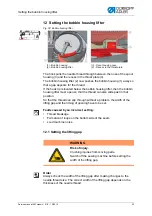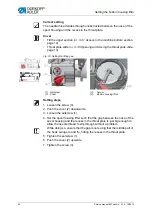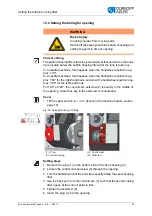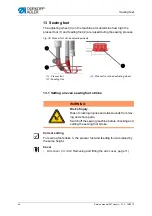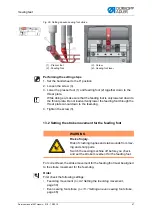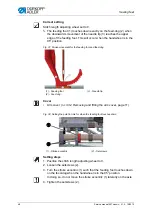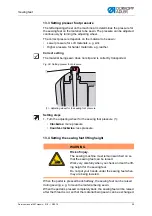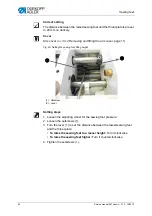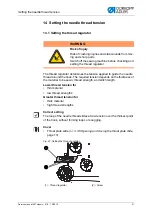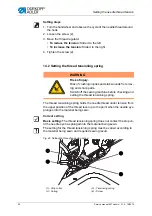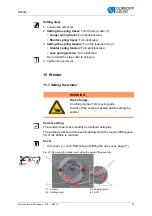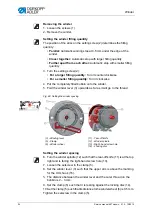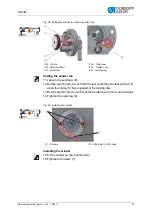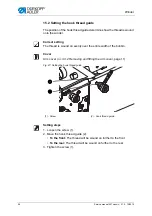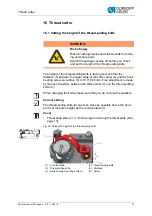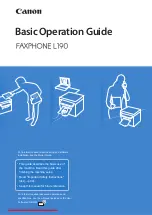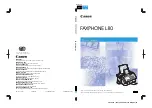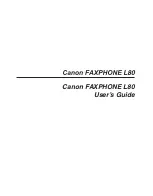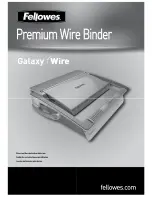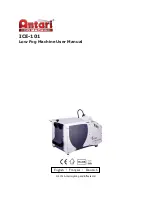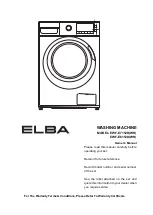
Thread cutter
Service manual 567 classic - 01.0 - 10/2015
57
16 Thread cutter
16.1 Setting the height of the thread-pulling knife
The height of the thread-pulling knife is factory-set such that the
distance (5) between the upper edge of the knife carrier (4) and the hook
bearing screw-on surface (3) is 10.7+0.05 mm. Fine adjustment is made
by means of washers between the knife carrier (4) and the thread-pulling
knife (2).
When changing the knives make sure that you do not lose the washers.
Correct setting
The thread-pulling knife (2) pivots as close as possible above the hook
and is at the same height as the counter-blade (1).
Cover
•
Throat plate slide (
3.3.5 Opening and closing the throat plate slide
Fig. 48: Setting the height of the thread-pulling knife
WARNING
Risk of injury.
Risk of crushing injuries and stab wounds from mov-
ing and sharp parts.
Switch the sewing machine off before you check
and set the height of the thread-pulling knife.
6
4
1
2
3
5
(1) - Counter-blade
(2) - Thread-pulling knife
(3) - Hook bearing mounting surface
(4) - Thread-pulling knife
(5) - Distance
(6) - Screw
Summary of Contents for 567 CLASSIC
Page 1: ...567 classic Service manual...
Page 20: ...Working basis 18 Service manual 567 classic 01 0 10 2015...
Page 79: ......

